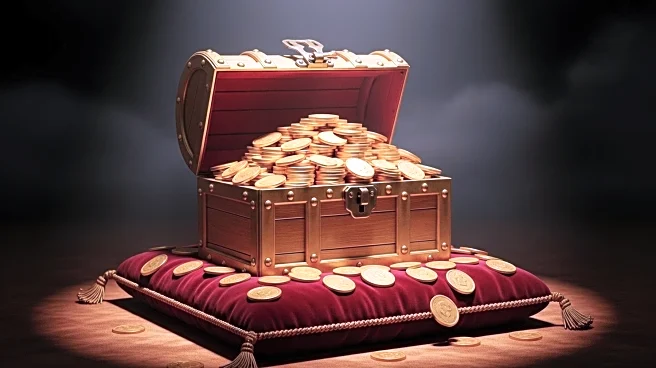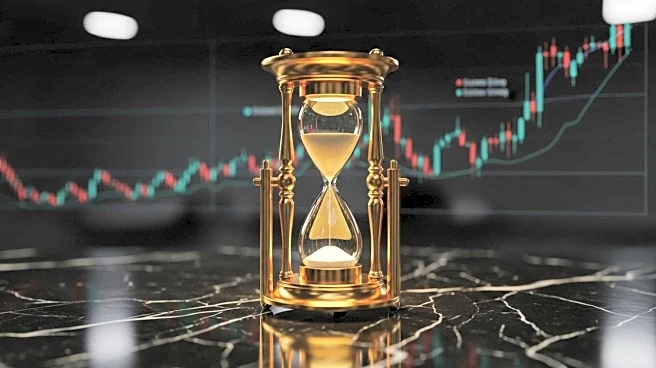What's Happening?
Ray Dalio, the founder of Bridgewater Associates, has advised investors to allocate up to 15% of their portfolios to gold. This recommendation comes as gold prices have surged to an all-time high above $4,000 an ounce. Dalio's advice contrasts with the traditional 60-40 portfolio split of stocks and bonds, suggesting a higher allocation to gold due to its performance during economic downturns. He likens the current economic environment to the early 1970s, characterized by inflation, high government spending, and significant debt, which undermined confidence in paper assets and fiat currencies.
Why It's Important?
Dalio's recommendation highlights a shift in investment strategies amid rising global tensions and fiscal deficits. Gold is seen as a hedge against inflation and monetary debasement, offering stability when traditional assets falter. This advice could influence investors to reconsider their asset allocations, potentially increasing demand for gold. The move also reflects broader concerns about the effectiveness of traditional debt instruments as stores of wealth in the current economic climate. Investors and financial advisors may need to reassess risk management strategies in light of these insights.
What's Next?
As investors consider Dalio's advice, there may be increased scrutiny on the performance of gold and other alternative assets. Financial markets could see shifts in asset allocations, impacting gold prices and related markets. Additionally, other financial leaders, like Jeffrey Gundlach, have echoed similar sentiments, suggesting a potential trend towards higher gold allocations. This could lead to broader discussions on portfolio diversification strategies and the role of alternative assets in mitigating economic risks.
Beyond the Headlines
Dalio's comments also raise questions about the long-term sustainability of current economic policies and their impact on traditional investment vehicles. The emphasis on gold as a hedge against geopolitical uncertainty and monetary debasement suggests a growing concern over the stability of fiat currencies. This could prompt further debate on the need for economic reforms and the potential for alternative currencies or assets to play a more significant role in global finance.










